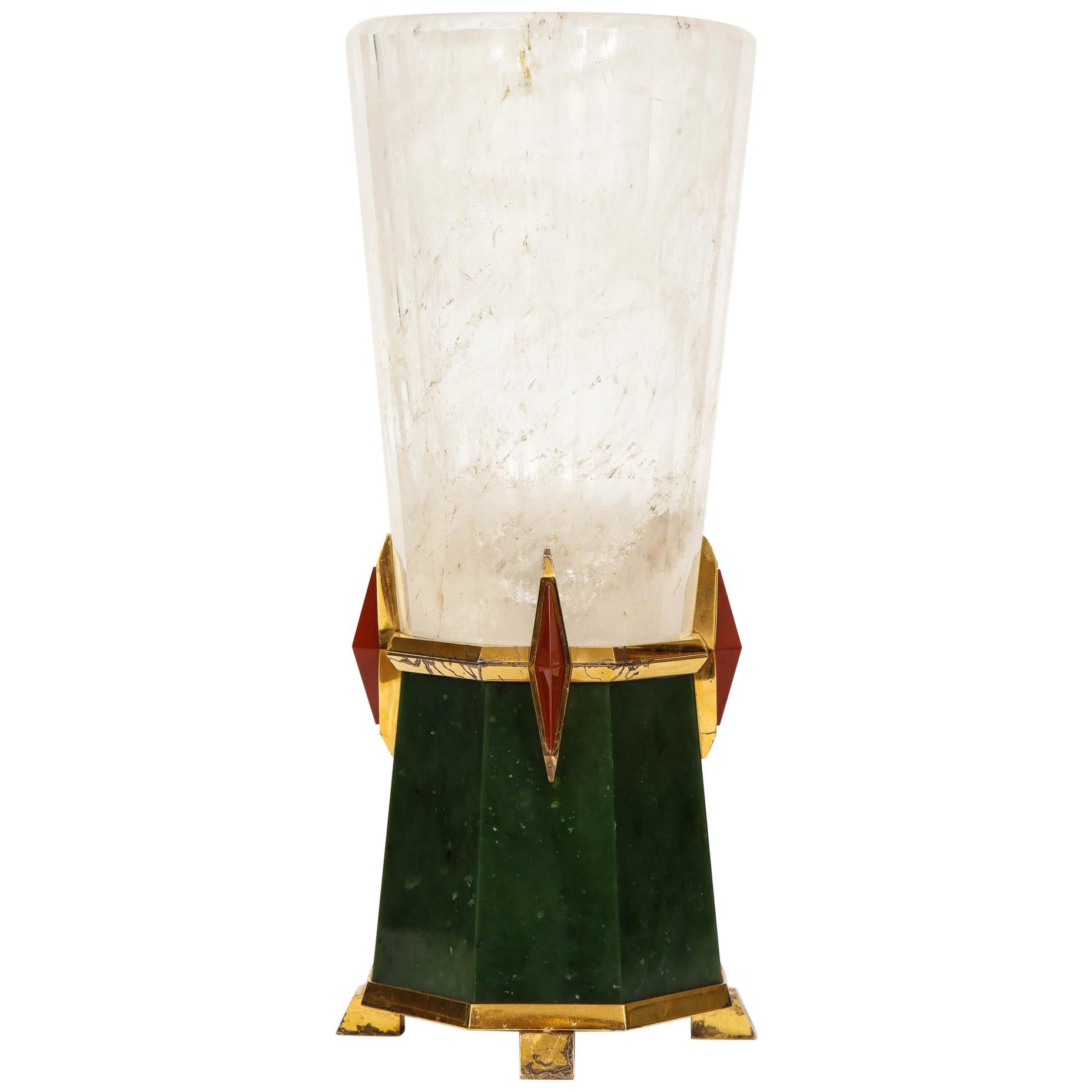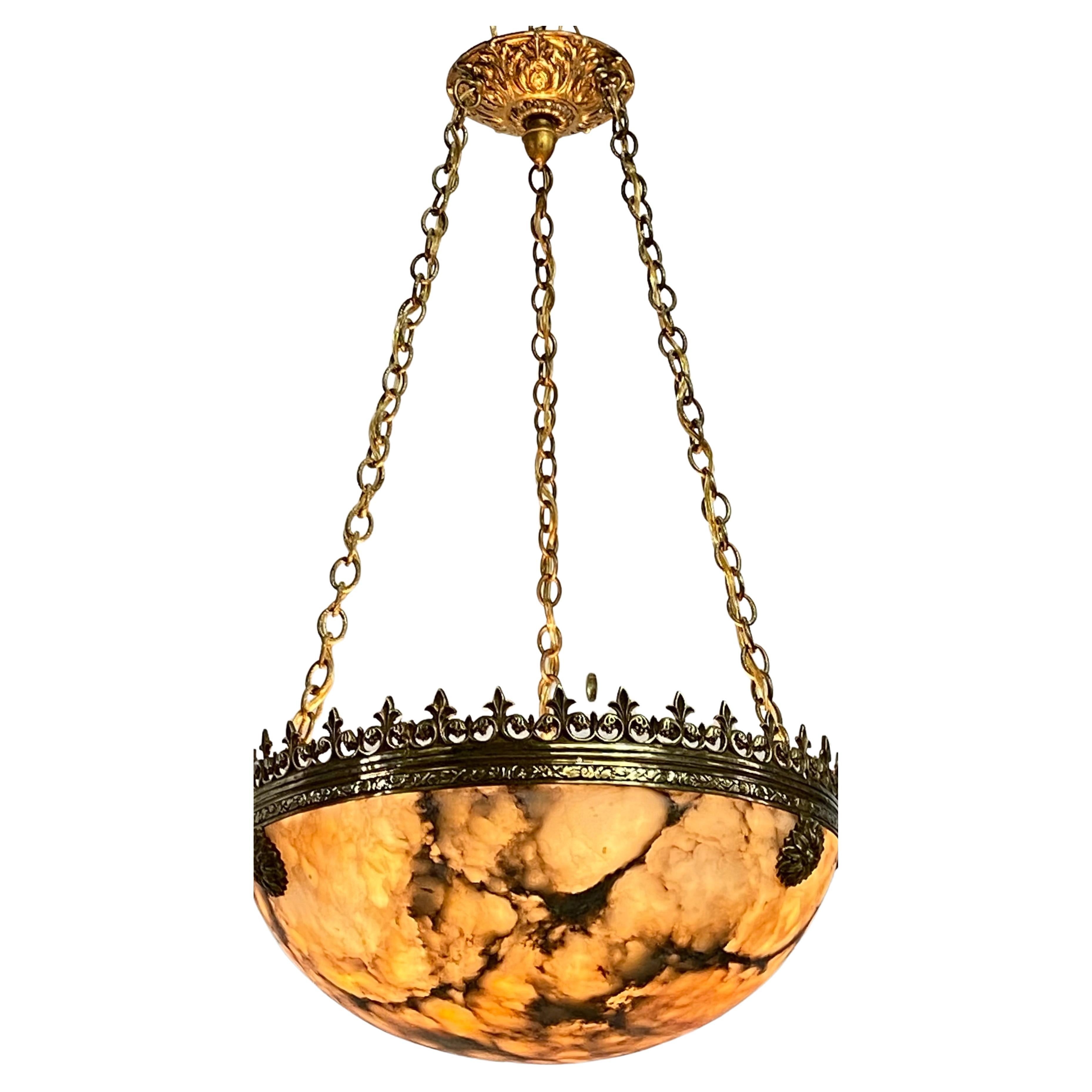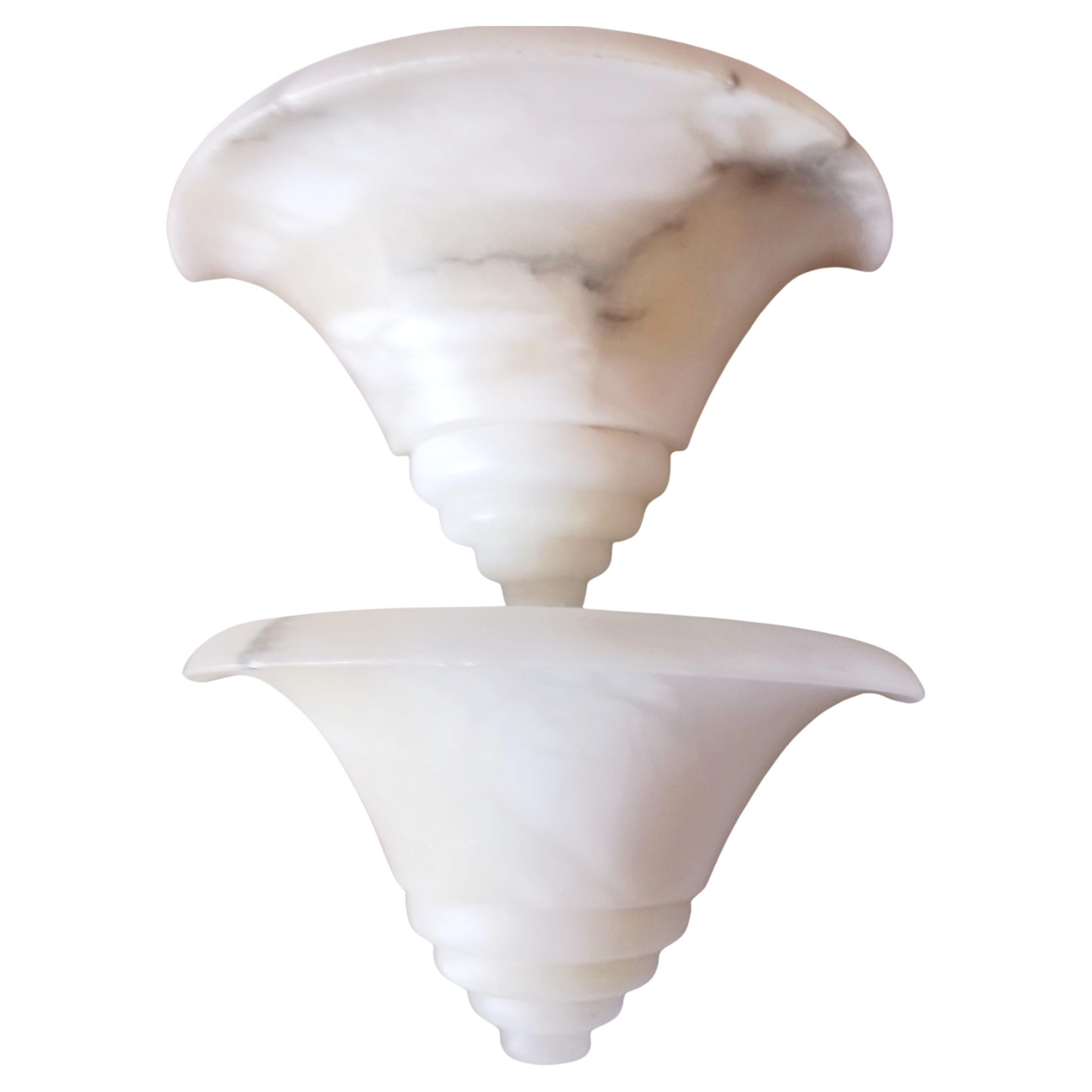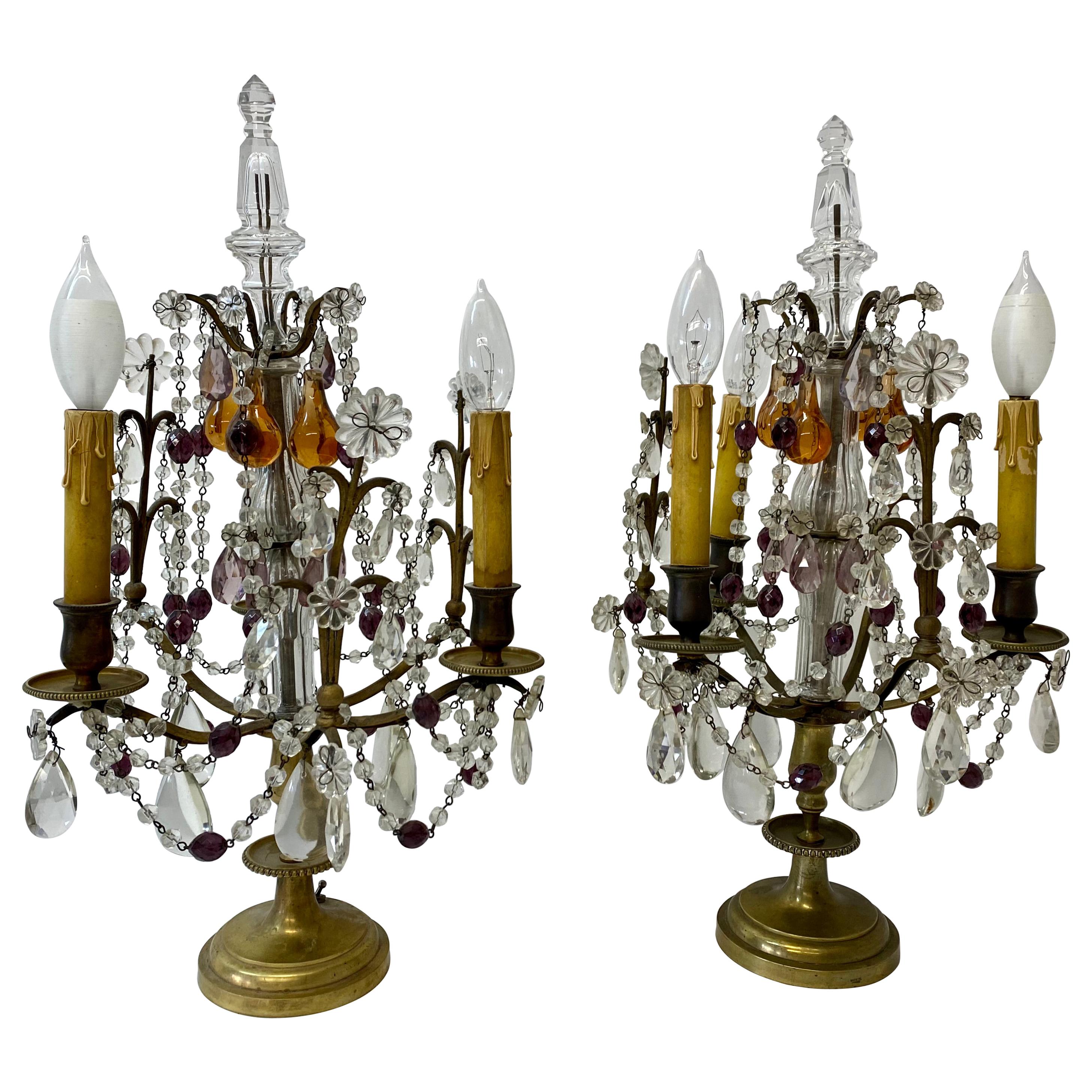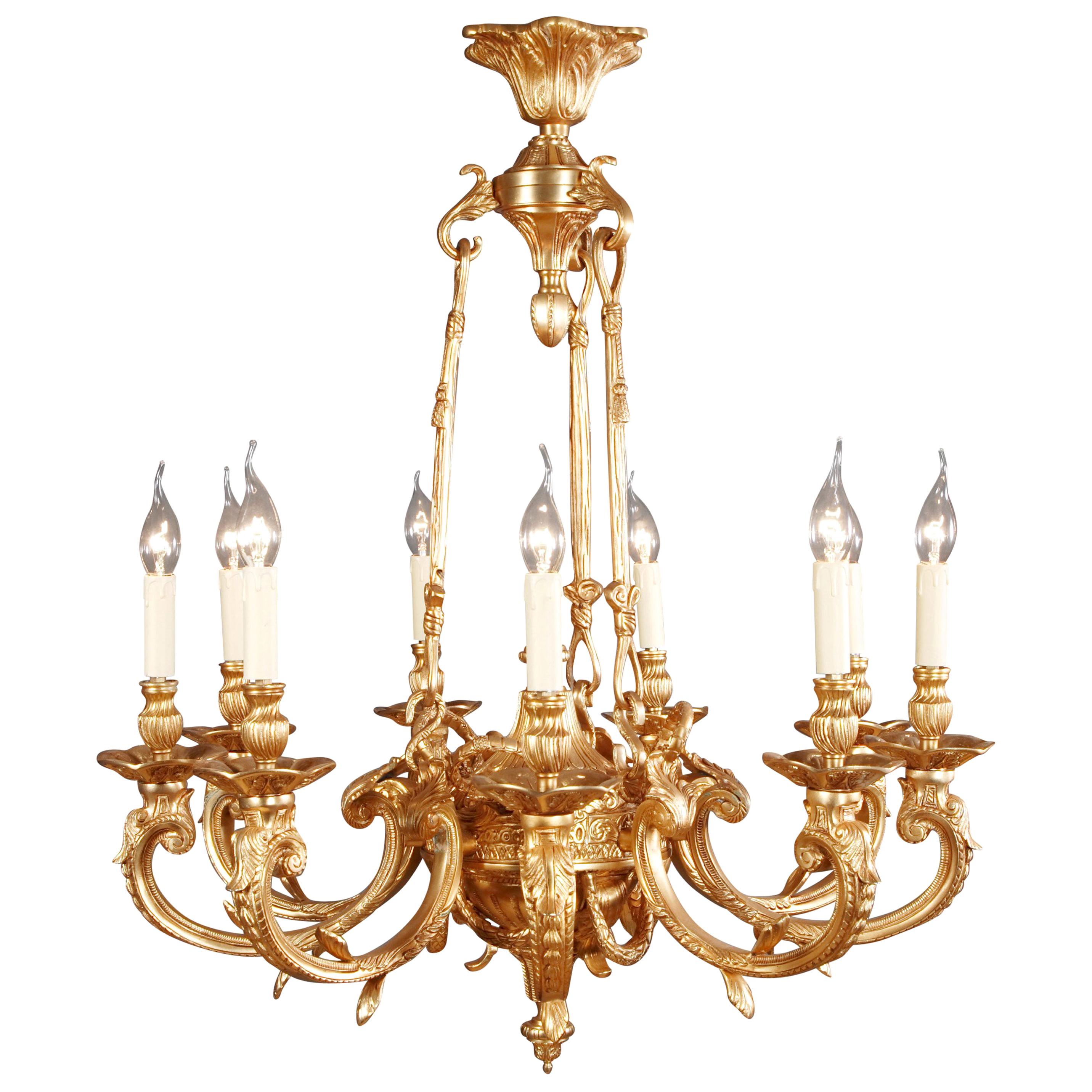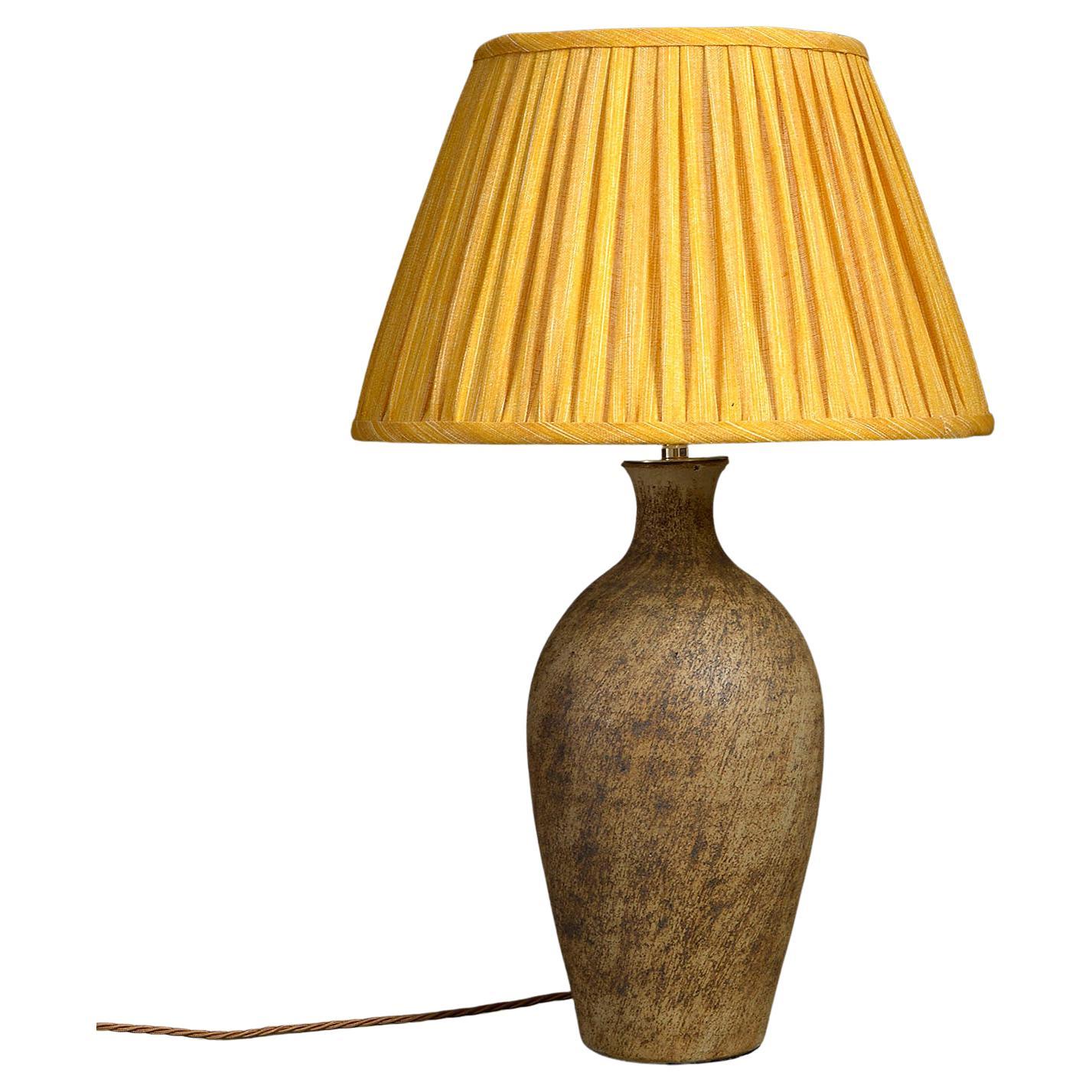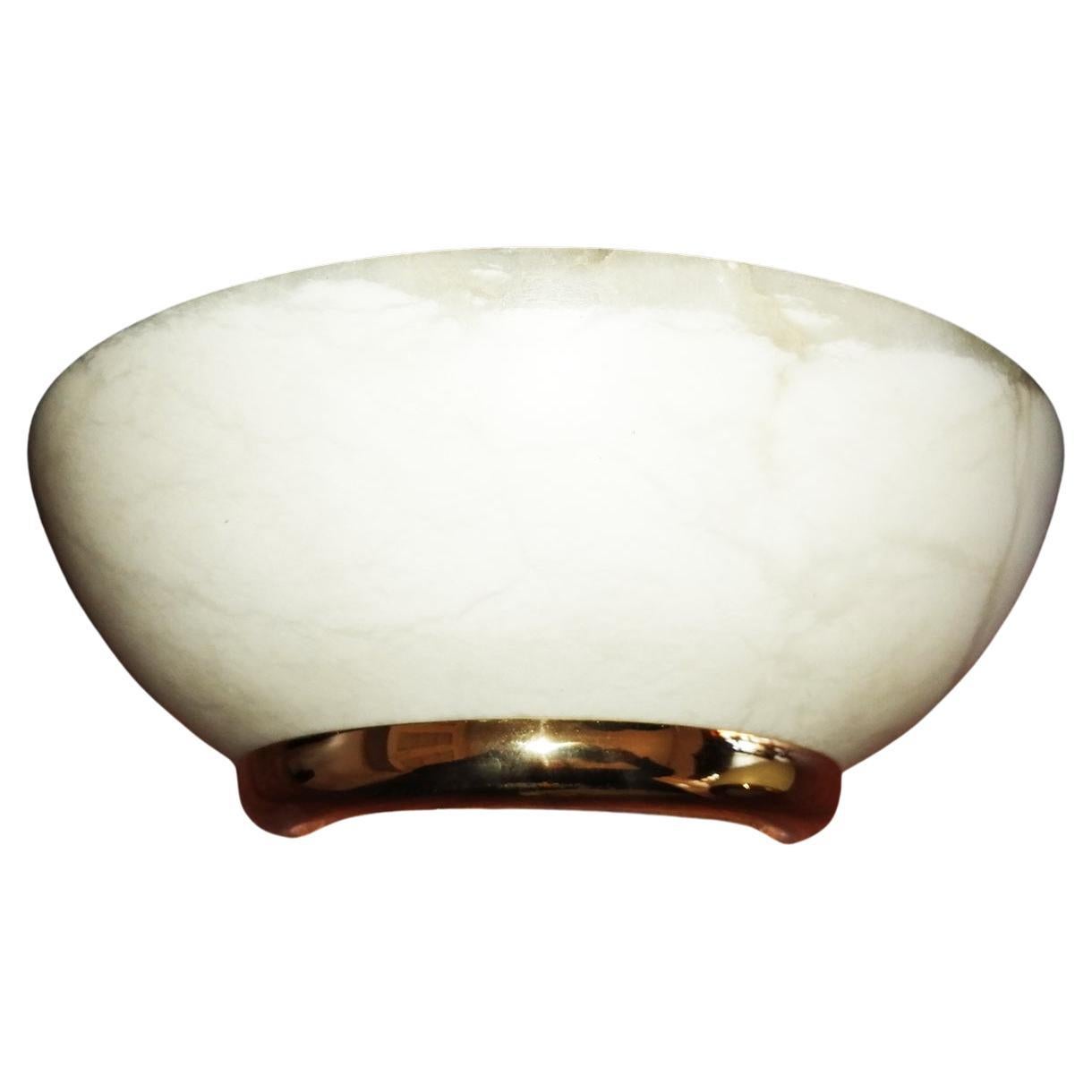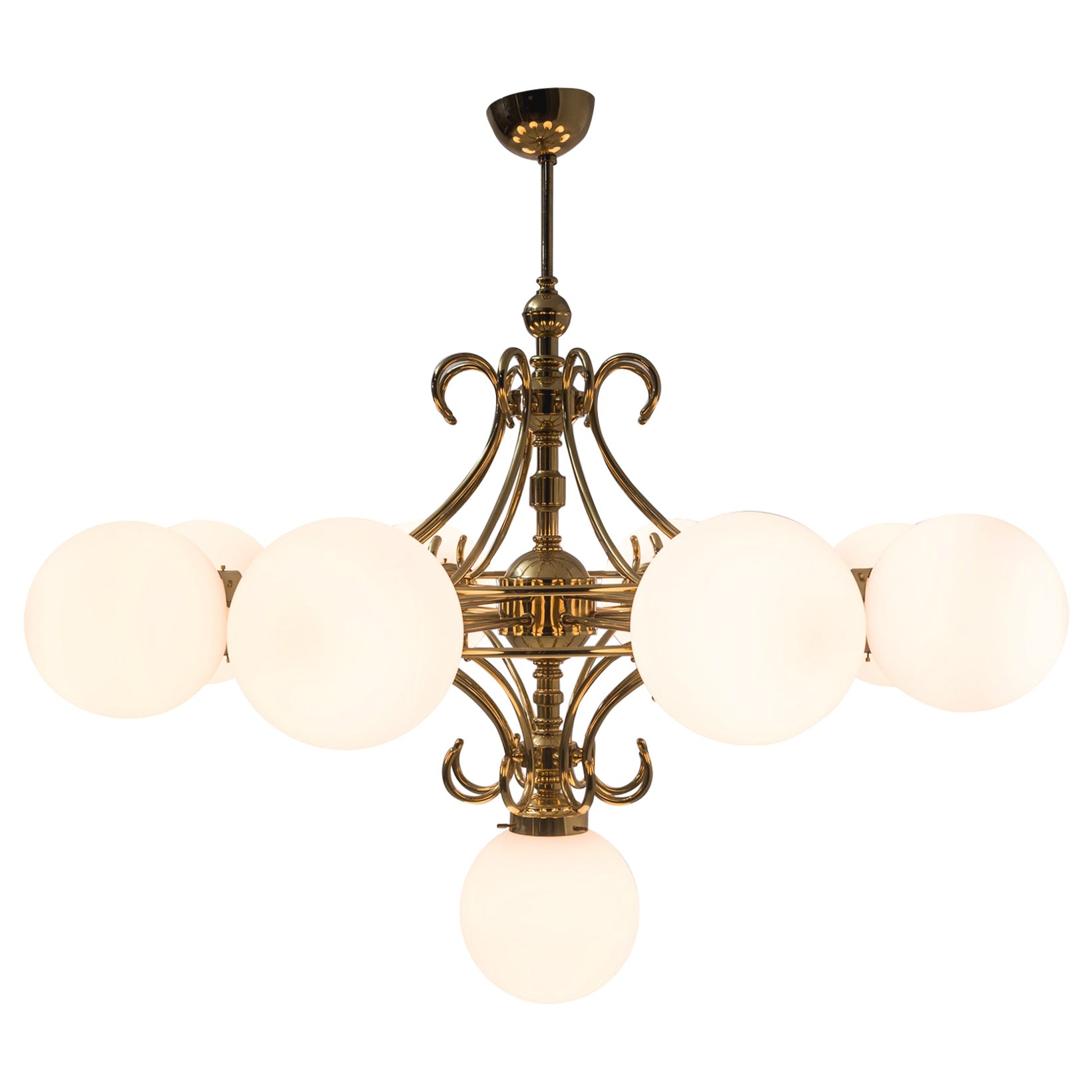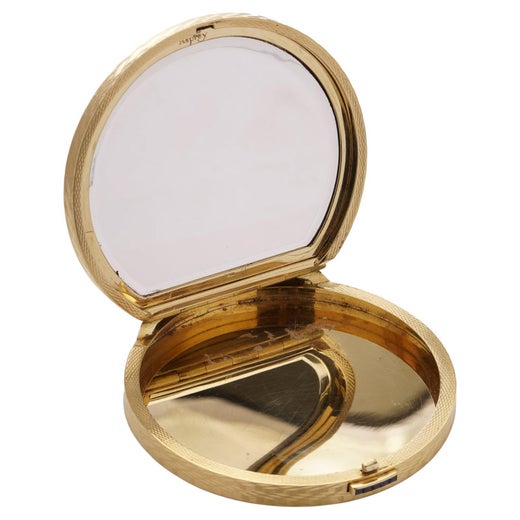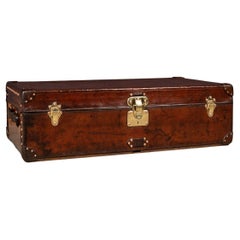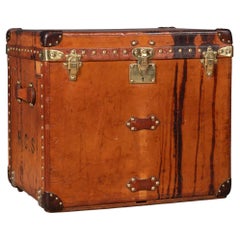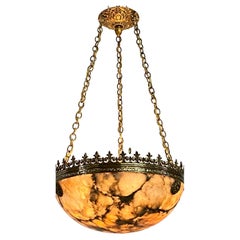
20th Century Asprey Trunk in Natural Cow Hide, London, c.1910
View Similar Items
20th Century Asprey Trunk in Natural Cow Hide, London, c.1910
About the Item
- Creator:Asprey International Limited (Retailer)
- Dimensions:Height: 13.39 in (34 cm)Width: 32.29 in (82 cm)Depth: 20.48 in (52 cm)
- Materials and Techniques:
- Place of Origin:
- Period:
- Date of Manufacture:circa 1910
- Condition:Wear consistent with age and use. Minor fading. In Great Condition - wear as expected, overall good vintage condition.
- Seller Location:Royal Tunbridge Wells, GB
- Reference Number:Seller: B75431stDibs: LU1348226243102
Asprey International Limited
Favored for over two centuries by European royalty, movie stars, rock music legends and England’s elite, Asprey International Limited’s reputation for creating elegant, high-quality furniture, jewelry and decorative objects is without equal. The storied manufacturer’s motto — “It can be done” — exemplifies their approach to design, which has proven over time to be both dynamic and enduring. To this day, Asprey International Limited remains a go-to purveyor of luxury goods and bespoke design services.
The roots of Asprey International Limited can be traced all the way back to 1781 when it was founded by William Asprey in Mitcham, Surrey. The business moved to its revered modern location, 166 Bond Street, in 1847. The company’s highly accurate regulator clock, once displayed in the window of their flagship, became a frequent stop for Londoners wishing to reset their watches.
Asprey first gained renown for its manufacture of exquisitely engineered dressing cases, which were compact pieces of luggage that travelers would use to tote their cosmetics and toiletries. At the International Exhibition of 1862, the company received a gold medal for its excellent dressing-case designs and also earned a Royal Warrant from Queen Victoria for their manufacture. Upon his ascension to the throne, King Edward II introduced incredibly formal Buckingham Palace court presentations, balls and soirées, resulting in a huge demand for diamond jewels starting with his coronation in 1902. The court jewelers Asprey, Garrard, Carrington and the newly opened London branch of Cartier were all overwhelmed with orders for sumptuous diamond jewelry to be worn at the king’s elaborate coronation. Currently, Asprey International Limited holds a Royal Warrant from His Royal Majesty Charles, Prince of Wales, for jewelry and silver.
Asprey continued to build its reputation for the production of luxury goods including tableware and silverplate pieces throughout the Victorian period and into the early 20th century. Especially known for its designs of the 1920s and ‘30s, Asprey International Limited considers the Art Deco period to have been its golden age. Their designers embraced the spirited originality of the period with open arms, and Asprey enjoyed a time of intense creativity and debuted a wealth of iconic creations throughout the mid-century modern period, too.
Asprey artisans have designed bespoke pieces for such notable celebrities as British musician Ringo Starr and American actress Angelina Jolie. They have also designed made-to-order accessories for Hollywood movies, most notably the Edwardian-style “Coeur de la Mer,” which was a piece of costume jewelry from James Cameron’s 1997 hit, Titanic. The company’s recreation of the piece — this time designed with actual gems sourced from Sri Lanka — fetched more than $2 million at a fundraiser held in Princess Diana’s honor in 1998. Asprey previously acted as the official jewelry designer for the BAFTA awards and collaborated with Ferrari’s Formula 1 team during the late 1990s.
Asprey International Limited has received many awards and recognitions for its timeless designs. Most notably, it was awarded the Queen's Award to Industry in 1975. The London College of Arms bestowed upon the brand a new official coat of arms in 2006 to mark its esteemed 225-year-long legacy of excellence.
On 1stDibs, find antique Asprey International Limited decorative objects, lighting, serveware and silver and jewelry.
- 20th Century Louis Vuitton Cabin Trunk In Natural Cow Hide, Paris, c.1910By Louis VuittonLocated in Royal Tunbridge Wells, KentA rare Louis Vuitton cabin trunk covered in leather. Dating to the early part of the 20th century, covered not in the world famous (but more common) monogram canvas but in a single piece of cow hide. These all-leather trunks were made by special order and Louis Vuitton used...Category
20th Century French Trunks and Luggage
MaterialsLeather, Canvas
- 20th Century Louis Vuitton Cabin Trunk In Natural Cow Hide, Paris, c.1910By Louis VuittonLocated in Royal Tunbridge Wells, KentA rare Louis Vuitton cabin trunk covered in leather. Dating to the early part of the 20th century, covered not in the world famous (but more common) monogram canvas but in a single piece of cow hide. These all-leather trunks were made by special order and Louis Vuitton used...Category
20th Century French Trunks and Luggage
MaterialsLeather, Canvas
- 20th Century Louis Vuitton Trunk in Natural Cow Hide, Paris, c.1900By Louis VuittonLocated in Royal Tunbridge Wells, KentA very rare Louis Vuitton hat trunk dating to the early part of the 20th century, covered not in the world famous (but more common) monogram canvas but in a single piece of cow hide. These all-leather trunks were made by special order and Louis Vuitton used...Category
20th Century British Trunks and Luggage
MaterialsBrass
- 20th Century Louis Vuitton Suitcase In Natural Cow Hide, France c.1910By Louis VuittonLocated in Royal Tunbridge Wells, KentA highly unusual and exceptionally rare Louis Vuitton suitcase, originating from the early years of the 20th century, distinguishes itself not with the globally renowned monogram canvas but with a distinctive covering crafted from a singular piece of cowhide. This unique piece represents a special order from Louis Vuitton, showcasing the brand's historical commitment to utilising only the finest hides available. Unlike many of its counterparts, leather trunks and cases of this era often struggle to withstand the test of time, requiring regular treatments to prevent drying and disintegration. Remarkably, this particular example defies the odds, retaining the same supple quality it possessed on the day it first graced the shop floor. This suitcase belongs to Louis Vuitton's collection of "speciality materials," which encompasses a diverse range, including, but not limited to, zinc, copper, crocodile leather, and cow leather. A brief history about Louis Vuitton trunks: Louis Vuitton was born in 1821 to a farmer and milliner and came from a long-established working-class family in eastern France. Vuitton grew up understanding the effects of perseverance and a strong work ethic from watching his family. At the age of 16, he made the decision to walk 292 miles from his hometown to Paris to try and make a new life for himself. When he arrived the city was in the midst of industrialization with current modes of transportation evolving quickly allowing for longer journeys. With this came the need for sturdy travel pieces. Vuitton was taken as an apprentice for a successful box maker and packer named Monsieur Marechal. He learned to craft durable containers and how to pack them properly – a well-respected profession at the time.In 1854, years after he had mastered his craft and became well respected for it, Vuitton ventured out on his own to open a shop on Rue Neuve des Capucines. It was here that he began to establish himself as a luggage maker. Then, in 1858, Vuitton designed the first Louis Vuitton steamer trunk. At the time trunks had rounded tops to allow for water to run off but this did not allow for convenient stowage. Vuitton introduced a flat, yet waterproof, trunk that was easily stackable. The first of his trunks were outfitted with a grey canvas referred to as Trianon – it wouldn’t be until several decades later that the signature monogram would be introduced. With a burgeoning business, Vuitton moved his family and workplace to Asniere, where he employed twenty workers to craft his trunks. By 1900 he would have 100 employees, and in 1914 the company would more than double in size. After years of success, Vuitton began to experiment with the design of his luggage by introducing a new striped canvas pattern (1876) and later the still well-known Damier print (1888). The hand-painted patterns were developed to prevent counterfeits. Even in the late 1800s, Louis Vuitton was enough of a status symbol to warrant counterfeiting. In 1886, his son George invented and patented an ingenious locking system that made it impossible to pick the lock of their trunks. This lock is still used today. 1892 would prove to be a time of mourning for the family as Louis Vuitton passed...Category
20th Century French Other Trunks and Luggage
MaterialsBrass
- 20th Century Louis Vuitton Cow Hide Suitcase, France c.1920By Louis VuittonLocated in Royal Tunbridge Wells, KentA highly unusual and exceptionally rare Louis Vuitton suitcase, originating from the early years of the 20th century, distinguishes itself not with the globally renowned monogram canvas but with a distinctive covering crafted from a singular piece of cowhide. This unique piece represents a special order from Louis Vuitton, showcasing the brand's historical commitment to utilizing only the finest hides available. Unlike many of its counterparts, leather trunks and cases of this era often struggle to withstand the test of time, requiring regular treatments to prevent drying and disintegration. Remarkably, this particular example defies the odds, retaining the same supple quality it possessed on the day it first graced the shop floor. This suitcase belongs to Louis Vuitton's collection of "speciality materials," which encompasses a diverse range, including, but not limited to, zinc, copper, crocodile leather, and cow leather. A brief history about Louis Vuitton trunks: Louis Vuitton was born in 1821 to a farmer and milliner and came from a long-established working-class family in eastern France. Vuitton grew up understanding the effects of perseverance and a strong work ethic from watching his family. At the age of 16, he made the decision to walk 292 miles from his hometown to Paris to try and make a new life for himself. When he arrived the city was in the midst of industrialization with current modes of transportation evolving quickly allowing for longer journeys. With this came the need for sturdy travel pieces. Vuitton was taken as an apprentice for a successful box maker and packer named Monsieur Marechal. He learned to craft durable containers and how to pack them properly – a well-respected profession at the time.In 1854, years after he had mastered his craft and became well respected for it, Vuitton ventured out on his own to open a shop on Rue Neuve des Capucines. It was here that he began to establish himself as a luggage maker. Then, in 1858, Vuitton designed the first Louis Vuitton steamer trunk. At the time trunks had rounded tops to allow for water to run off but this did not allow for convenient stowage. Vuitton introduced a flat, yet waterproof, trunk that was easily stackable. The first of his trunks were outfitted with a grey canvas referred to as Trianon – it wouldn’t be until several decades later that the signature monogram would be introduced. With a burgeoning business, Vuitton moved his family and workplace to Asniere, where he employed twenty workers to craft his trunks. By 1900 he would have 100 employees, and in 1914 the company would more than double in size. After years of success, Vuitton began to experiment with the design of his luggage by introducing a new striped canvas pattern (1876) and later the still well-known Damier print (1888). The hand-painted patterns were developed to prevent counterfeits. Even in the late 1800s, Louis Vuitton was enough of a status symbol to warrant counterfeiting. In 1886, his son George invented and patented an ingenious locking system that made it impossible to pick the lock of their trunks. This lock is still used today. 1892 would prove to be a time of mourning for the family as Louis Vuitton passed...Category
20th Century French Other Trunks and Luggage
MaterialsBrass
- 20th Century Louis Vuitton Cow Hide Suitcase, France c.1920By Louis VuittonLocated in Royal Tunbridge Wells, KentA highly unusual and exceptionally rare Louis Vuitton suitcase, originating from the early years of the 20th century, distinguishes itself not with the globally renowned monogram canvas but with a distinctive covering crafted from a singular piece of cowhide. This unique piece represents a special order from Louis Vuitton, showcasing the brand's historical commitment to utilizing only the finest hides available. Unlike many of its counterparts, leather trunks and cases of this era often struggle to withstand the test of time, requiring regular treatments to prevent drying and disintegration. Remarkably, this particular example defies the odds, retaining the same supple quality it possessed on the day it first graced the shop floor. This suitcase belongs to Louis Vuitton's collection of "speciality materials," which encompasses a diverse range, including, but not limited to, zinc, copper, crocodile leather, and cow leather. A brief history about Louis Vuitton trunks: Louis Vuitton was born in 1821 to a farmer and milliner and came from a long-established working-class family in eastern France. Vuitton grew up understanding the effects of perseverance and a strong work ethic from watching his family. At the age of 16, he made the decision to walk 292 miles from his hometown to Paris to try and make a new life for himself. When he arrived the city was in the midst of industrialization with current modes of transportation evolving quickly allowing for longer journeys. With this came the need for sturdy travel pieces. Vuitton was taken as an apprentice for a successful box maker and packer named Monsieur Marechal. He learned to craft durable containers and how to pack them properly – a well-respected profession at the time.In 1854, years after he had mastered his craft and became well respected for it, Vuitton ventured out on his own to open a shop on Rue Neuve des Capucines. It was here that he began to establish himself as a luggage maker. Then, in 1858, Vuitton designed the first Louis Vuitton steamer trunk. At the time trunks had rounded tops to allow for water to run off but this did not allow for convenient stowage. Vuitton introduced a flat, yet waterproof, trunk that was easily stackable. The first of his trunks were outfitted with a grey canvas referred to as Trianon – it wouldn’t be until several decades later that the signature monogram would be introduced. With a burgeoning business, Vuitton moved his family and workplace to Asniere, where he employed twenty workers to craft his trunks. By 1900 he would have 100 employees, and in 1914 the company would more than double in size. After years of success, Vuitton began to experiment with the design of his luggage by introducing a new striped canvas pattern (1876) and later the still well-known Damier print (1888). The hand-painted patterns were developed to prevent counterfeits. Even in the late 1800s, Louis Vuitton was enough of a status symbol to warrant counterfeiting. In 1886, his son George invented and patented an ingenious locking system that made it impossible to pick the lock of their trunks. This lock is still used today. 1892 would prove to be a time of mourning for the family as Louis Vuitton passed...Category
20th Century French Other Trunks and Luggage
MaterialsBrass
- Art Deco Style Rock Crystal, Enamel & Russian Green Jasper Lamp; Asprey LondonBy Asprey International LimitedLocated in New York, NYA very unusual Art Deco style, gilt silver, hand-carved rock crystal, red and green Russian Jasper mounted table lamp; by Asprey of London. This magnifi...Category
Mid-20th Century British Art Deco Table Lamps
MaterialsJade, Rock Crystal, Silver
- Alabaster and Brass Light Fixture, Early 20th Century Circa 1910Located in San Francisco, CAAn exceptional alabaster light fixture with original brass hardware. Restored and re-wired, ready to install. Early 20th century circa 1910.Category
Early 20th Century Chandeliers and Pendants
MaterialsAlabaster, Brass
- Wall Sconces Alabaster White Natural Spain 20th CenturyLocated in Mombuey, ZamoraWhite /Greynatural alabaster sconces It is a very special piece, the white is very pure and one of them has a nice gray streak so characteristic, looking very pretty when illuminated...Category
Mid-20th Century Italian Art Deco Wall Lights and Sconces
MaterialsAlabaster
- Alabaster Wall Sconces White Natural Spain 20th CenturyLocated in Mombuey, ZamoraWhite alabaster sconces It is a very special piece, the white is very pure and one of them has a nice gray streak so characteristic, looking very pretty when illuminated their shape...Category
Mid-20th Century Spanish Minimalist Wall Lights and Sconces
MaterialsAlabaster
$1,243 Sale Price / set40% Off - Pair of Early 20th Century Table Top Four Light Candelabras, c.1910Located in San Francisco, CAPair of early 20th century table top four light candelabras, c.1910. Gorgeous pressed and hand blown glass table top candelabras The frames are made from cast bronze Each candela...Category
Early 20th Century American Art Nouveau Table Lamps
MaterialsBronze
- Alabaster White Natural Pair of Table Lamps .Italy 20th CenturyLocated in Mombuey, ZamoraNew wiring Large table lamps in pure white natural alabaster or marble and bronze. They are large in size, suitable to place on a side table in the living room or on a nightstand It...Category
Mid-20th Century Italian Empire Revival Table Lamps
MaterialsMarble, Alabaster, Brass
$1,048 Sale Price / set20% Off

